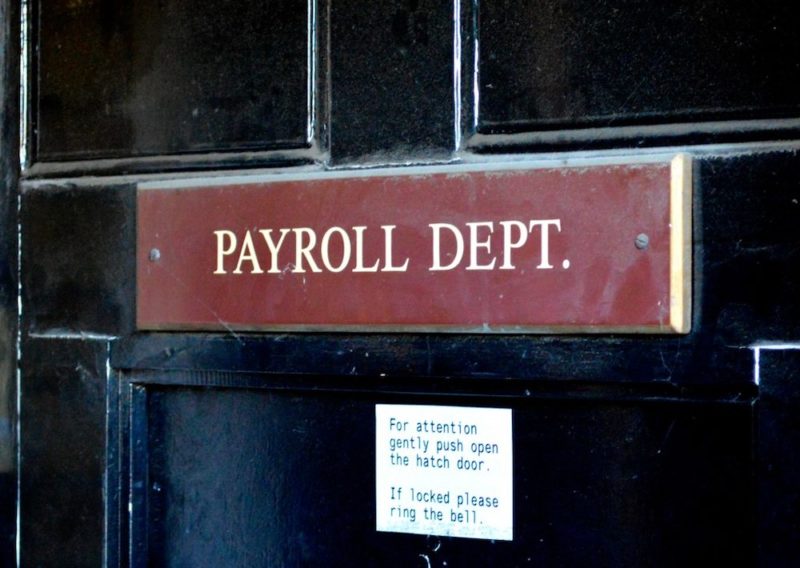Written by Technically Media CEO Chris Wink, Technical.ly’s Culture Builder newsletter features tips on growing powerful teams and dynamic workplaces. Below is the latest edition we published. Sign up to get the next one.
That hypothetical rational person would only need to answer a simple question for herself: Between wages and other benefits, does this job give me more total value than any other readily available one for my skills? What a coworker is paid wouldn’t change her answer because that coworker would have a different calculus.
The trouble is that very few people are fully and coldly rational. We’re social creatures. What we’re paid matters to most of us less than how that pay compares to others. Your $50,000 salary feels very different if your peers make $40,000 than if they make $60,000.
On that foundation rests a movement for what’s commonly called “salary transparency” (others use the term “pay transparency” to include hourly and contract workers, not just salaried employees). Just 12% of public job listings in early 2022 included salary ranges, according to data from ZipRecruiter. That percentage jumped by a third over 2019, thanks to a demanding pandemic hiring market.
What advocates, critics and researchers say
Job posts with listed salary expectations give jobseekers and current employees more information for negotiating with employers.
That information especially benefits women and people of color, argue many policy champions. Research from Payscale suggests that due to a mix of bias and culture, the average white man is more likely to successfully negotiate higher pay than the average Black woman.
State and local governments have begun mandating such disclosures. Starting this month, New York City requires all employers with four or more employees doing work within the city to list “good faith” salary ranges for all public job descriptions. Similar legislation introduced in Colorado in 2019, which imposes fines for non-compliance, had its own impact.
Big corporate employers hate this dynamic, considering how any public salary range influences internal dynamics.
There is good organizational research on the topic. A recent study demonstrates that salary transparency reduces gaps for workers both in the same job (pay equity) and at different levels (wage compression). Advocates like that.
The research showed at least one wrinkle, though: Salary transparency also reduced the correlation between performance and pay.
This analysis drew from data on one narrow profession (academics) and comparisons are imperfect, but it seemed like higher achievers lost out to their peers.
That last bit contradicts recent orthodoxy. In his 2015 book, “Work Rules!,” ex-Google HR exec Laszlo Bock argued that companies should always compensate their employees “unfairly” by overpaying high performers. His logic: There should be a wider gap between the most valuable employees and the rest, because a small sliver of contributors outperforms their peers.
Dulling financial upsides for high performers echoes a common criticism of regulating narrow organizational behaviors: unintended consequences.
So, what should employers do?
Organizational norms are shaped by one or two factors: cultural expectations or government regulation.
For example, while most US companies aren’t required to extend severance packages to laid-off employees, two-thirds of employers offered them in 2021 — a big jump from 2019. Like tipping at restaurants, that’s not regulated yet still now part of our culture.
Pay transparency was on a similar track, growing by leaps and bounds during this pandemic. But as recessionary threats loom, employers are pulling back on many employee benefits — even parental leave. If hiring really cools, will employers’ budgetary transparency remain?
Regulation removes that question. But brings up other questions.
For one, what unintended consequences might result? Look at another field for comparison. Airfare aggregator sites transformed air travel into an industry dominated by low headline prices and an endless stream of surprise fees. With consistent pay transparency, salary may take even greater and earlier precedent for jobseekers — shifting how we think of a blend of workplace offerings.
Ought companies be fully transparent about who gets paid what? That may be the direction, but it will play out more in expectations than in policy. The complexity of “equal pay for equal work” is that it’s rare to find two employees who ever contribute the exact same amount. Two software engineers or project managers in the same team may have the same title without offering the same value. That subjectivity is also where bias lies, so our choice is to balance between the good and the bad of transparency and discretion.
Employers, firm up your salary bands for roles and share them with your team. Add those ranges to your job descriptions. Reserve variation for performance but follow through with routine audits to correct for wage gaps. Our pay is entwined with our self-worth — and for many of your employees, it matters what everyone else is making too.
Sign up for the Culture Builder newsletterJoin the conversation!
Find news, events, jobs and people who share your interests on Technical.ly's open community Slack

Delaware daily roundup: Over 4,000 Black-owned businesses uncovered; Dover makes rising cities list; a push for online sports betting

Delaware daily roundup: Ladybug Fest illuminates small biz; Hahnemann Hospital's biotech future; intl. politics and a Middletown project

Philly daily roundup: Jason Bannon leaves Ben Franklin; $26M for narcolepsy treatment; Philly Tech Calendar turns one


